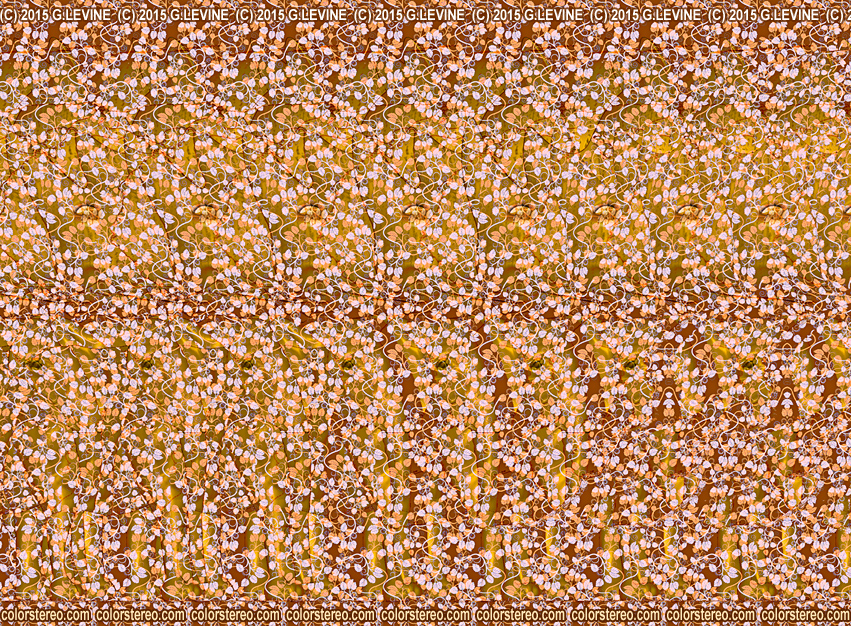
You can use Stereogram Explorer to create easy visible stereograms for beginners.

Render SIRDS and use it as texture for SIS. If you want to render dot stereogram, use dot texture for SIS method. When we view a stereogram whose left and right images are of different, but uniform, colours. There is not recommended use this rendering method. Multi-coloured stereograms unveil two binocular colour. Stereogram Explorer corrects this problem with light blur. Drawback of random dot stereograms is that 3D shapes are not smooth and there are visible depth layers. These images, known from the magic eye books, reveal a hidden 3D image. You need only depth map for creating SIRDS. Random dot stereograms were created from black&white dots.

Single Image Random Dot Stereograms – Random dot stereogram is image created from dots.
Reveal stereogram free#
You can find many free textures on Internet. Recommended are asymmetric textures with good contrast and some small objects as stones, balls. Single Image Stereograms – Textured stereogram is created from tiled image and depth map. What is textured (patterned) stereogram (SIS)? Human brain is not ‘ready’ for moving objects without textures. SIS (textured) stereograms are not good for animations. Now is supported only random-dot rendering. Load 3DS model, set starting position and select animation properties. What I need to create animated stereogram? Another way is find depth maps on Internet or use some rendering application as 3D Studio, Truespace, Anim8or etc. You can find thousands free models in 3DS format. You need 3D model, open in Stereogram Explorer, set right view angle and scale and your depth map is ready. autostereograms reveal 3D images all alone, and they are unable to hide a. Anderson Paper Writing Perspective Philosophy Phonons Plasmons Polarization Publications Public Outreach Quantum Hall Effect Quantum Mechanics Research Review Science Funding Screening Semiconductors Spectroscopy States of Matter Statistical Mechanics Superconductivity Superfluidity Symmetry Technology Theorems The Wire Topological Insulators Topology Toy Model W.Stereogram Explorer enables create depth maps from imported 3DS model. (also known as single image stereogram), which is derived from stereopair or. Landau Level Repulsion Linear Response Management Media Motivation Neil DeGrasse Tyson Null Results Open science optics Order Parameters P.W. Bardeen Jan Hendrick Schon Josephson Junctions L. Wallpaper Stereograms Random Dot Stereograms Magic Eye Stereograms. A stereogram is a 2D image that encodes stereo information so that, when viewed correctly, it reveals a hidden 3D scene. Leggett Acoustics Aharonov-Bohm Art Avoided Crossing BCS Theory Bell's Theorem Bell Labs Berry Phase Books Bose-Einstein Condensation Broken Symmetries Career Advice Career Concerns Careerism Charge Density Waves Climate Change Cooper pairing Creativity Education Experiment Fun Good Science Graduate School Graphene Harmonic Oscillator History Honesty Humor Integrity J. Web Activity 6.3 Stereoscopes and Stereograms. Here is an image of a random-dot stereogram that I made in MS Paint in about a minute:Įnter your email address to follow this blog and receive notifications of new posts by email. They will start moving towards each other. The shells will double and will appear blurry. Scroll down below and find the practice image with guiding seashells. They are probably the easiest kinds of stereograms to generate. Some stereograms have two guiding dots at the top. Let’s now return to random dot stereograms. Since they are not focused on the same element, but the elements are physically the same, the brain is tricked into triangulating distance, resulting in the perception of depth. What one is doing when one views the tiling above stereoscopically, is that the left eye is seeing one element of the pattern while the right is seeing another. how you would look at a magic-eye image), then one can immediately tell that from back to front, we have black, orange then pink, indicating the differences in spacing. However, if one looks at the image stereoscopically (i.e. black, pink or orange) are spaced further apart. If one looks at the image normally, it takes a while to figure out which tiles (i.e.

In fact, our depth perception is vastly superior to our ability to discern lateral displacements. This allows us to triangulate, and our brain turns this information into depth. Humans are particularly adept at depth perception due to the fact that we have two eyes that are horizontally separated from one another. Stereograms were discovered in 1959 by Bela Julesz, a scientist at Bells Labs, who invented random dot stereograms to study depth perception. Magic-eye images are actually part of a much larger set of images known as stereograms.


 0 kommentar(er)
0 kommentar(er)
